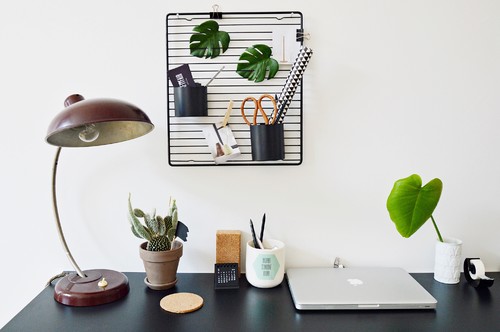
Getting a furry friend is always an exciting time, however, it’s definitely a good idea to make a few tweaks to your home and take some precautions to ensure a happy, healthy life for the newest member of your family. Here are a few starter tips whether you’re getting a cat or dog.
In the kitchen. The biggest danger in the kitchen is when pets help themselves to toxic foods left out on the counter, or worse, from the trash. Just like humans, raw meat of any kind can be dangerous for them to ingest, as well as chocolate, onions and grapes. Some of the best ways to prevent them from eating human food are to keep counters clear, store food in hard-to-reach upper cabinets, use a pet-proof trash can and put up a pet gate during food prep and mealtime.
In the bathroom. Toilet bowl water is commonly contaminated with chemical cleaners, so you probably don’t want your pet drinking or falling into it. You can use the same toilet locks used with young children to prevent this. It’s also smart to keep bathroom counters clear of small accessories, such as hair ties, bobby pins, jewelry and makeup. Keep cleaning solutions, both here, in the kitchen and the laundry room, out of reach too. If you’re prone to keeping a dirty laundry pile in the bathroom, be sure to keep loose clothes off the floor so they don’t get torn or chewed up.
Lastly, especially for big dogs, you may want to consider integrating a pet washing station into the bathroom, mudroom or laundry room. This can be done by building out an entirely new setup or installing an extra ledge in an existing, spacious shower. Smaller dogs and cats can be easily washed in oversized utility or even kitchen sinks.
In the living room. One of the biggest concerns here is ensuring your pet doesn’t claw up your furniture. Leather and synthetic fibers are great options for sofas since they can easily be wiped clean, and carpet tiles are great alternatives to regular carpets and area rugs because you can replace any tile individually for a small price if it gets damaged.
Many pets love having a great view of the outdoors. If you have expansive windows nearby, set up a nice lounging area for them by putting a pet bed or cushion along a window seat. In addition to that, many pets also love cozying up by the fire. Be sure to protect them from getting hurt or burned by an open fire with a simple screen.
In the home office. Protect yourself against having to use the age-old excuse of “my dog ate my homework” by filing loose papers away in a cabinet or binder and away from pesky paws. Another concern here is exposed bundles of cords, which can electrocute your furry friend if they chew on them. Tuck them away or cover them with concealer cables, which have the added benefit of helping declutter your workspace.
Give them their own space. Although you’ll probably want to spend most of your day snuggling your pet, it’s also important to give them a space of their own. Their cozy corner can easily be integrated into any low-traffic zone such as the laundry room or garage where you can arrange their bed, favorite toys and food and water bowls. Crates and litter boxes have come a long way from their traditional bulky look and can now be hidden under a desk, integrated under the staircase or custom made to match your room design.
The great outdoors. Just like many of us, dogs and cats love basking in the sun and exploring nature. Consider installing a pet door so they can go in and out as they please. Add a fence or gate around your yard so they don’t run off and get lost. It’s also a good idea to have a boundary or cover for outdoor features, such as pools, ponds and fire pits, so they don’t fall in and injure themselves. Finally, exercise caution when planting garden favorites, such as daffodils, tulips and hydrangeas, since they can be toxic to dogs and cats if ingested.
Integrating technology. It’s always important to show your furry friend some love. If your budget allows, invest in one of these new technologies to keep your pet happy and healthy. Automatic pet doors that are linked to a device on your pet’s collar beat traditional versions by blocking wildlife, rodents and even snow or rain from coming in too. GPS smart collars also help keep your pet safe and able to locate in worst case scenarios. Lastly, automated water and food feeders are great alternatives to manual feedings, especially for people with busy lifestyles, and can even help your pet diet and lose weight.
Source: CB Blue Matter Blog

 Facebook
Facebook
 X
X
 Pinterest
Pinterest
 Copy Link
Copy Link















